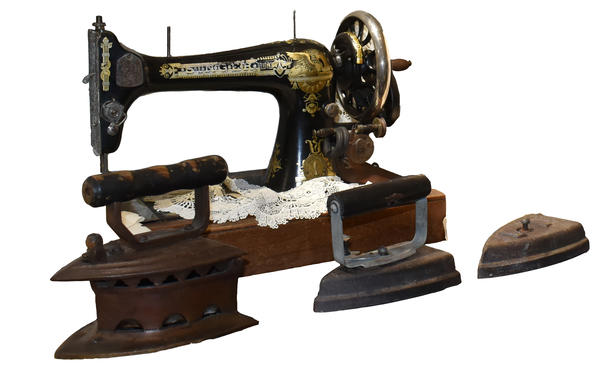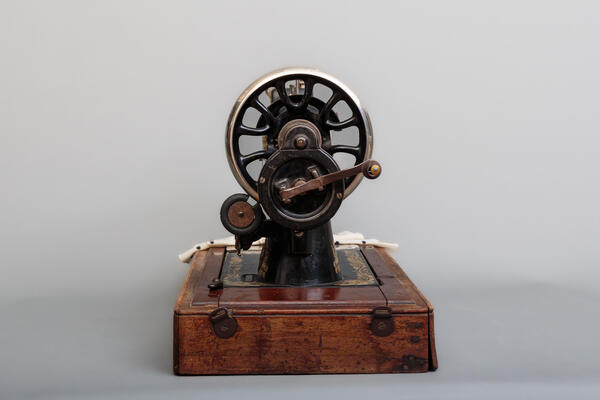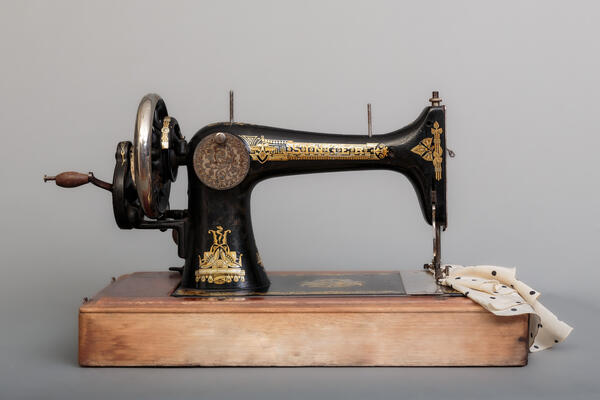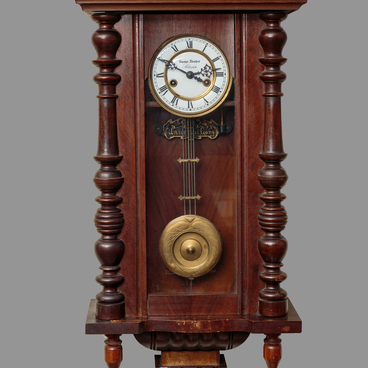The life of a well-to-do townswoman in the 19th — early 20th centuries was rich in social events: receptions, balls, musical evenings and plays, and dinner parties. Women’s social standing obliged them to dress in good taste and appropriate to the occasion, so caring about their attire was an integral part of life.
Some dressmakers worked for the nobility, while others had a more modest clientele. A special role in the world of fashion was played by modistes. This profession originated in France in the 17th century, but became popular in Russia two centuries later. Modistes designed, sewed and sold all kinds of accessories for women’s clothing. They tended to create hats, as well as capes, veils and fans themselves. For dresses they usually ordered a “cut” (base) from dressmakers and then made it unique with the help of lace, ribbons, embroidery and other decorative elements. Women were also famous for their skill in altering worn-out and out-of-fashion clothes. In 1803 schools of modistes began to appear in large cities.
Until the 20th century, modistes were widely recognized as the trendsetters of fashion. The most talented and enterprising among them opened their own fashion houses and employed dressmakers, lacemakers, seamstresses, furriers, embroiderers, craftsmen who made corsets and artificial flowers. The shop offered gloves, pins, fans and other “lady’s trifles”.
Yevgeniya Abramovna Rachlin, a hereditary dressmaker who owned a shop for ladies’ hats and manufactured goods in Samoilov’s house was one such modiste. At the shop, customers could choose their outfits after consulting the shopkeeper and studying the fashion magazines and “fashion pictures” on offer. They were received from Paris, and from the early 20th century they began to be published in Russian magazines: “Moscow Mercury”, “Fashion Bulletin”, “General Fashion Magazine”, “Fashion Shop” and even the art and literary journals “Library for Reading” and “Sovremennik”. In fashion magazines only images of ready-made dresses were printed, and it was the task of the modiste to make a pattern from it.
While the lady was ordering or trying on (folding screens were used for this purpose), her companion could relax in an armchair and flick through magazines. For privileged customers, the order was delivered to their doorstep.
Fine decorative work was done manually. The clothes themselves were sewn on Singer sewing machines at the beginning of the 20th century. These machines on a wooden base with a gold-colored plant-zoomorphic ornament on the running gear were an indispensable part of the workshop.
Some dressmakers worked for the nobility, while others had a more modest clientele. A special role in the world of fashion was played by modistes. This profession originated in France in the 17th century, but became popular in Russia two centuries later. Modistes designed, sewed and sold all kinds of accessories for women’s clothing. They tended to create hats, as well as capes, veils and fans themselves. For dresses they usually ordered a “cut” (base) from dressmakers and then made it unique with the help of lace, ribbons, embroidery and other decorative elements. Women were also famous for their skill in altering worn-out and out-of-fashion clothes. In 1803 schools of modistes began to appear in large cities.
Until the 20th century, modistes were widely recognized as the trendsetters of fashion. The most talented and enterprising among them opened their own fashion houses and employed dressmakers, lacemakers, seamstresses, furriers, embroiderers, craftsmen who made corsets and artificial flowers. The shop offered gloves, pins, fans and other “lady’s trifles”.
Yevgeniya Abramovna Rachlin, a hereditary dressmaker who owned a shop for ladies’ hats and manufactured goods in Samoilov’s house was one such modiste. At the shop, customers could choose their outfits after consulting the shopkeeper and studying the fashion magazines and “fashion pictures” on offer. They were received from Paris, and from the early 20th century they began to be published in Russian magazines: “Moscow Mercury”, “Fashion Bulletin”, “General Fashion Magazine”, “Fashion Shop” and even the art and literary journals “Library for Reading” and “Sovremennik”. In fashion magazines only images of ready-made dresses were printed, and it was the task of the modiste to make a pattern from it.
While the lady was ordering or trying on (folding screens were used for this purpose), her companion could relax in an armchair and flick through magazines. For privileged customers, the order was delivered to their doorstep.
Fine decorative work was done manually. The clothes themselves were sewn on Singer sewing machines at the beginning of the 20th century. These machines on a wooden base with a gold-colored plant-zoomorphic ornament on the running gear were an indispensable part of the workshop.






